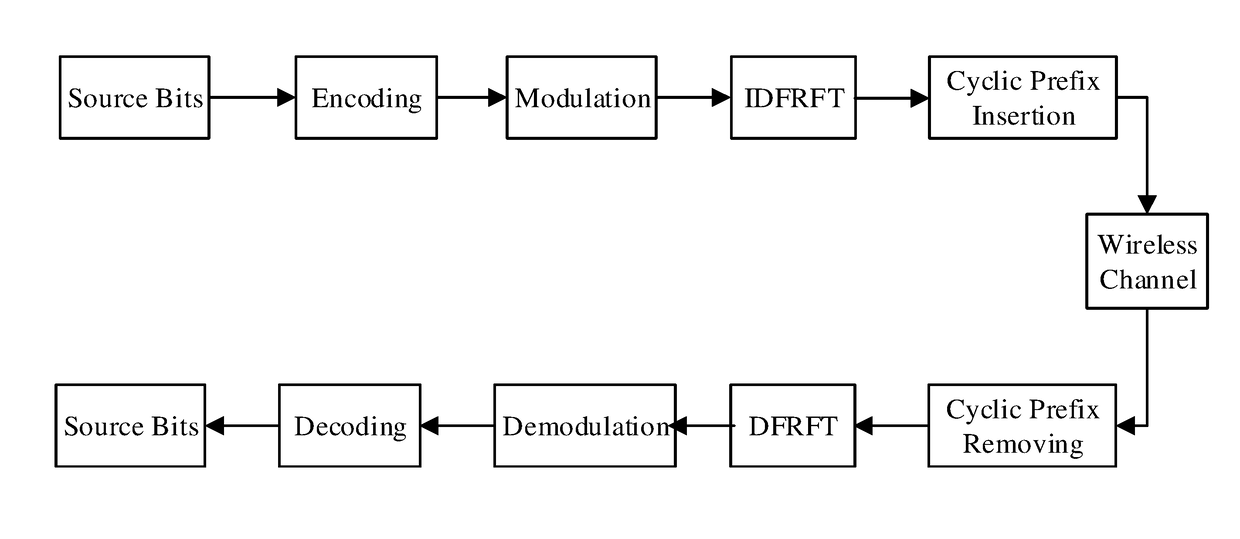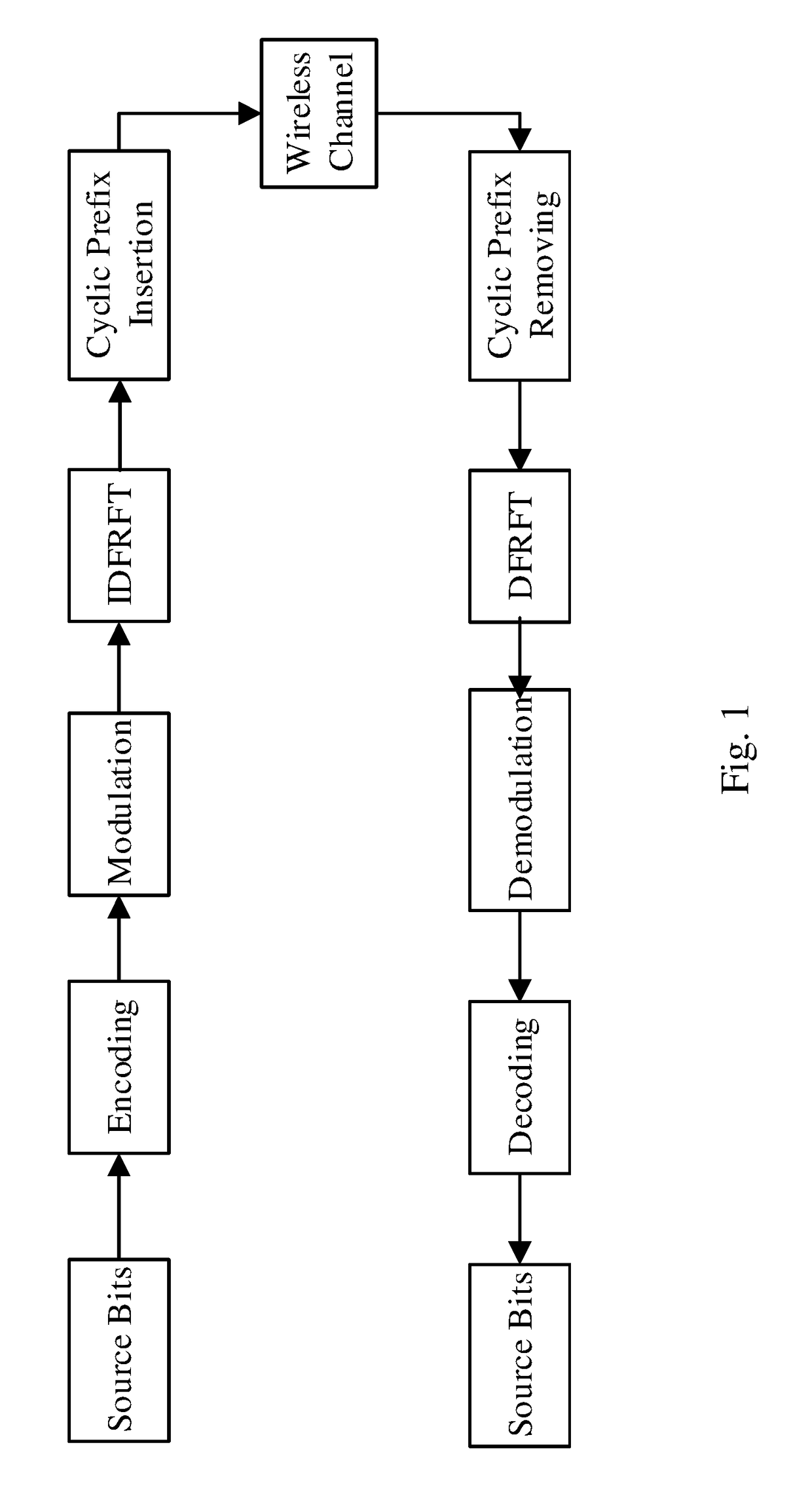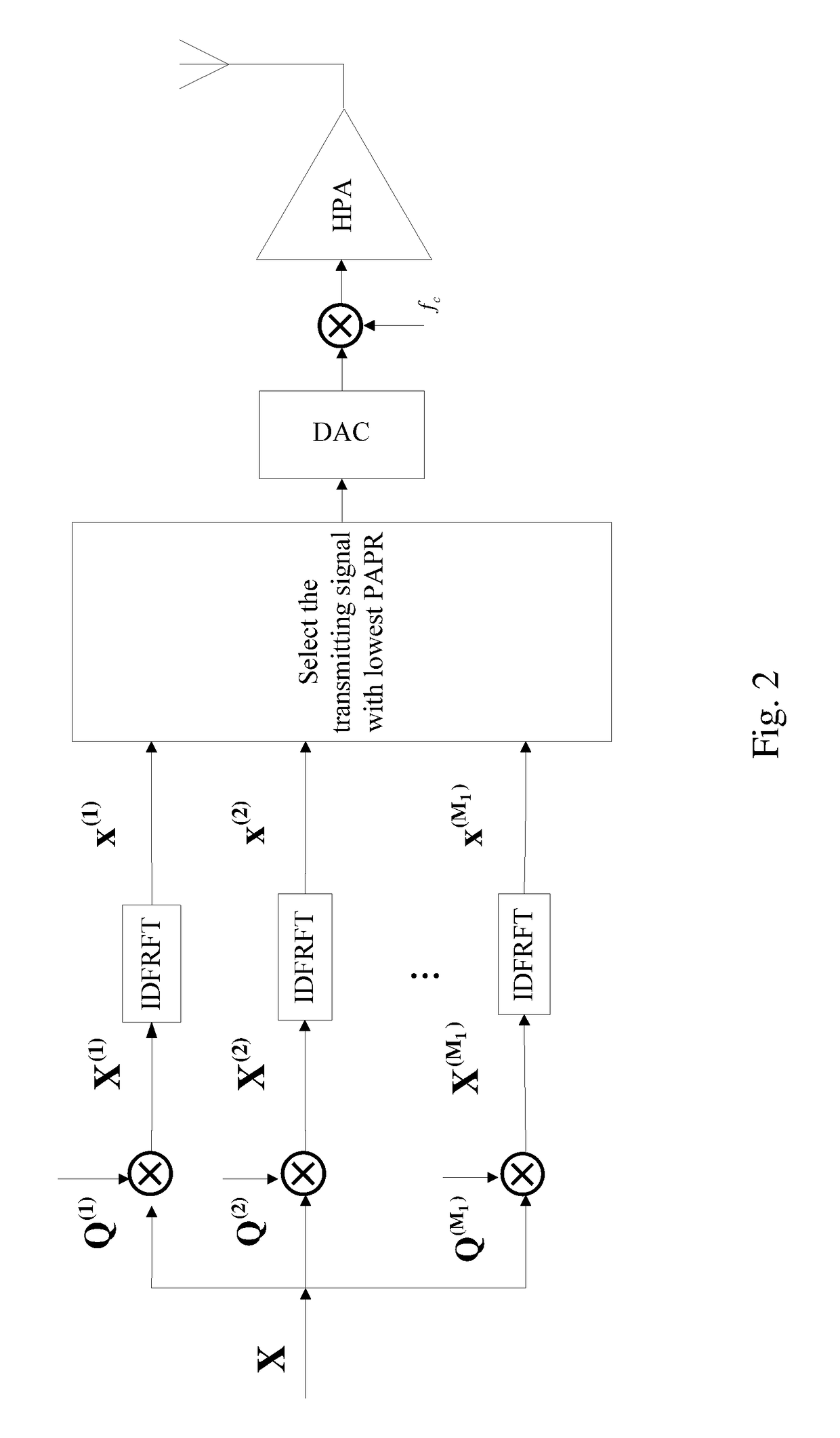Low complexity method for reducing PAPR in FRFT-OFDM systems
a low complexity, frftofdm technology, applied in the direction of digital transmission, electrical apparatus, transmission, etc., can solve the problems of low system efficiency, high operating cost, and possible compromise of the orthogonality between the subcarriers of the ofdm system, so as to reduce the papr of the frftofdm system, maintain the system's ber performance, and reduce computational complexity
- Summary
- Abstract
- Description
- Claims
- Application Information
AI Technical Summary
Benefits of technology
Problems solved by technology
Method used
Image
Examples
examples
[0058]The following examples are provided by way of illustration only, and not by way of limitation.
[0059]FIG. 5 is a block diagram of the PAPR reduction method of the present invention. The steps of the PAPR reduction method are as follows.
[0060](1) At a transmitting end of the FRFT-OFDM communication system, perform an N-point inverse discrete fractional Fourier transform (IDFRFT) of digitalized complex input data X of length N and converting it into the time domain to obtain FRFT-OFDM subcarrier signal x(n), wherein n is 1, 2 , . . . , N.
[0061](2) Use a multiplexer to perform a p-order chirp periodic extension of the FRFT-OFDM subcarrier signal x(n) to obtain an extended chirp sequence, x((n))P,N, wherein chirp refers to a linear frequency modulation and p is the order of Fractional Fourier Transform, and wherein the conversion equation for the p-order chirp periodic extension is:
x(n-N)j12cotα•(n-N)2Δt2=x(n)-j12cotα•n2Δt2(9)
wherein α=pπ / 2, and Δt is the sampling interval.
[0062](3...
PUM
 Login to View More
Login to View More Abstract
Description
Claims
Application Information
 Login to View More
Login to View More - R&D
- Intellectual Property
- Life Sciences
- Materials
- Tech Scout
- Unparalleled Data Quality
- Higher Quality Content
- 60% Fewer Hallucinations
Browse by: Latest US Patents, China's latest patents, Technical Efficacy Thesaurus, Application Domain, Technology Topic, Popular Technical Reports.
© 2025 PatSnap. All rights reserved.Legal|Privacy policy|Modern Slavery Act Transparency Statement|Sitemap|About US| Contact US: help@patsnap.com



